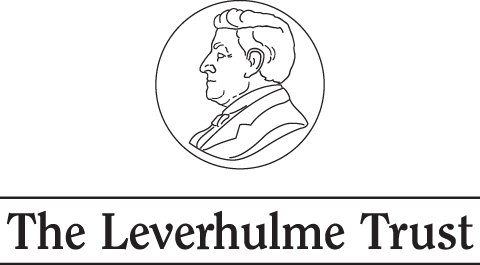 The journals of André Gide (1869-1951) give a remarkable insight into the life of literary Paris in the late 1800s and early 1900s, and his influence on other authors of the age is immeasurable, proving him to be an extremely notable celebrity of the period.[1]
The journals of André Gide (1869-1951) give a remarkable insight into the life of literary Paris in the late 1800s and early 1900s, and his influence on other authors of the age is immeasurable, proving him to be an extremely notable celebrity of the period.[1]
Gide was an unlikely “fellow traveller”. A great proponent of individualism, of the aesthetic, in the 1930s he declared allegiance to a political ideology that, to all appearances, subsumed the individual.[2] After publicly declaring support for the doctrine (but never joining the PCF), Gide was invited to speak at Maxim Gorky’s funeral, along with other famous writers, and then to tour the Soviet Union as a guest of the Union of Soviet Writers.[3] He did this along with various other important writers of the period, including Jef Last (1898-1972).[4]
But his fellow-travelling did not last long. After his speeches in the USSR were met with censorship, and he witnessed first hand the cultural state of the Soviet machine, he changed his mind, and in 1936 released Retour de l’U.R.S.S (Return from the USSR), in which he criticised heavily the lack of creative freedom he perceived in the Soviet Experiment:
The revolutionary spirit (or even simply the critical spirit) is no longer the correct thing, … it is not wanted anymore? What is wanted now is compliance, conformism. What is desired and demanded is approval of all that is done in the USSR; and an attempt is being made to obtain an approval that is not mere resignation, but a sincere, an enthusiastic approval. What is most astounding is that this attempt is successful. On the other hand the smallest protest, the least criticism, is liable to the severest penalties, and in fact is immediately stifled.[5]
After writing more on his experience in the USSR in 1937, with Retouches â Mon Retour de l’U.R.S.S (Reflections on My Return from the USSR), he then continued to criticise the ideology, notably as a contributor to Richard Crossman‘s (1949) The God That Failed, a collection of essays from leading ex-communist intellectuals, including Arthur Koestler.[6] He repudiated Communism for the rest of his life, joined by many in doing so in the 1940s and 1950s.[7]
As a writer, Gide was inspired by Greek and Roman culture. For example, he took titles from ancient mythology and literature – from Virgil’s Georgics for his Corydon (1920), and Virgil’s Aeneid for his Et Nunc Manet in Te (1951). He used myth to display his aesthetic philosophy in his Le Traité du Narcisse: Theorie du Symbole (1891) and Amyntas (1906), and, more explicitly, staged and novelised ancient stories, from his famous Le Prométhée Mal Enchaîné (1899), to his lesser-known Philoctète (1899), Le Roi Candaule (1901), and Œdipe (1931). His Perséphone (1943) was made into an opera after its publication. Perhaps the most notable adaptation of ancient myth in his oeuvre is Thésée (1946), an autobiographical retelling of the life of Theseus, from his birth to his rule in Athens.
Thésée (1946) is political in a manner which we might not expect from a Gide who had disavowed Communism in 1936. Throughout the text, we have various ideological depictions that align with a leftist depiction of the myth – for example, the demonisation of the upper-classes and the advocation of equality (but the acknowledgement that this ‘always fails’). Communism is depicted through the body of the Minotaur, who is beautiful and enticing until you look him in the eyes and see the stupidity there. Gide actively uses classical myth to display a political point – a leftist one, but one that is strongly anti-Communist.
![]() This profile was written by Anna Coopey
This profile was written by Anna Coopey
[1] He is thought to have inspired Albert Camus, in particular – specifically in terms of anti-colonial literature (see Pratt, Mary L (1981): Mapping Ideology: Gide, Camus, and Algeria from College Literature, Vol. 8, No. 2 (pp. 158-174) (The John Hopkins University Press)); Gide, André (trans. J O’Brien) (1967): Journals 1889-1949 (Penguin).
[2] See Gurian, Waldemur (1937): André Gide’s Return from the U.S.S.R from New Blackfriars, Vol. 18, Issue 204 (pp. 183-189) (Wiley Online Library)
[3] For an exploration of Gide’s politics, see Conner, Tom (2000): André Gide’s Politics: Rebellion and Ambivalence (Palgrave MacMillan), and particularly Hollander’s chapter on Gide and Soviet Communism (pp. 161-178).
[4] For images of André Gide in the USSR, and commentary on the relationship between him and Jef Last, see l’Ami Hollandais by Pieter Jan Smit (2005).
[5] Gide, André (trans. Dorothy Bussy) (1937): Return from the U.S.S.R. (Alfred Knopf), pp. 41-42.
[6] Gide, André (1937): Retouches â Mon Retour de l’U.R.S.S. (Gallimard); Crossman, Richard (1949): The God That Failed (Columbia University Press).
[7] The Hungarian Revolution of 1956 and the Prague Spring of 1968 were particular points which saw great losses of membership in communist parties – see Brown, Archie (2010): The Rise and Fall of Communism (Vintage Publishing).



